Introduction and Background
Gender and urban development are intimately interrelated, and the politics of space are never far from the picture. Recognition that space and the built environment are constituted by, as well as constitutive of gender, has long been established in feminist analyses of the city, even if the ‘private’ space of the household has tended to be somewhat neglected in mainstream theory (see Fenster, 2005; Jarvis et al, 2009; Massey, 1994; McDowell, 1999).
The present article, which draws substantially on our contributions to the preparation of UN-HABITAT’s (2013) State of Women in Cities 2012/13, sketches out some key parameters of gendered space in an urban future which is likely to be dominated demographically by women, even if social, economic and political gains lag behind. Indeed, while at one level the contemporary ‘urban transition’ in the Global South offers scope for advancing gender equality, given the common association of urbanisation with expanded economic, social and political opportunities for women, barriers to female ‘empowerment’ remain widespread, especially among the urban poor and/or those who reside in slums (areas marked by one or more ‘shelter deprivations’ in respect of services, tenure, overcrowding and so on). This is evidenced, inter alia, by gender-inequitable access to ‘decent’ work and living standards, human capital acquisition, physical and financial assets, personal safety and security, and representation in formal structures of urban governance.
This complex assemblage of gender disparities requires a nuanced consideration of women’s disadvantage from a multidimensional perspective which takes into consideration the politics of space at different and interrelated scales from the household, to the neighbourhood, to cities at large (Chant and Datu, 2011). Awareness of intra-spatial heterogeneity is also paramount: even poor homes and neighbourhoods, for instance, vary in terms of location (central, inner-city, peripheral), tenure (rental/de jure or de facto ownership), and character (slum/non-slum; consolidated/precarious; serviced/un- or semi-serviced). As such, women living in peri-urban slums devoid of services and infrastructure, residing in low quality shelter, and constrained in their ability to connect with the rest of the city may be more challenged than their counterparts living in similarly marginalised but more centrally-situated neighbourhoods (Khosla, 2009:7).
Cities as Spaces for Women? Demographic Dimensions
One of the key demographic processes pertinent to the contemporary gender dynamics of cities is that women are increasingly forming the majority of urban populations across the Global South. This is especially so in Latin America where strongly feminised sex ratios bear witness to female-selective migration over several decades (Chant, 2013).
Traditionally lower levels of female-selective rural-urban migration in sub-Saharan Africa and South Asia owe to deeply-intertwined social and spatial processes, such as moral and physical restrictions on independent female movement, virilocal marriage, the encouragement of young men to gain experience in the city as a form of masculine ‘rite of passage’, and poor employment opportunities for women (Chant and McIlwaine, 2009; Tacoli and Mabala, 2010).
Despite evidence that women in both of these regions are now gaining ground in urban labour markets, increases in female migration are also driven by rural women’s cumulative disadvantage in land acquisition and inheritance coupled with economic deterioration in the countryside and the pressures on households to spread risk (Tacoli, 2010). Additional factors responsible for women’s urban drift in countries such as Tanzania include the need for HIV-positive women to obtain medical treatment, as well as to avoid stigma in close-knit rural communities (Hughes and Wickeri, 2011:837-8)
Cities and Older Women
The general feminisation of urban populations in conjunction with demographic ageing and women’s longer life expectancy has also led to a pronounced skew to feminised urban sex ratios among ‘older’ cohorts (>60 years) and dramatically so among the ‘older old’ (>80 years). In Botswana and Argentina, for example ‘older old’ women outnumber their male counterparts by nearly two to one, while in Malaysia the ratio is almost 1.5 to one.
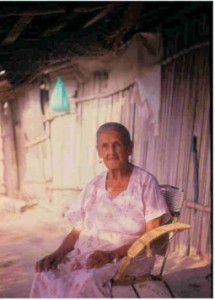
Elderly widow in a Puerto Vallarta slum, Mexico © Sylvia Chant
Cities of Female-Headed Households?
Sex-selective demographic ageing, and its association with widowhood, has undoubtedly contributed to upward levels of female household headship in recent decades. In urban Latin America, for example, households headed by women rose by a mean of 9.8 percentage points between the late 1980s and the end of the first decade of the 21st century (Chant, 2013). Other reasons commonly mooted for rising proportions of female-headed households in towns and cities include greater access by urban women to employment and independent earnings, and to land and property, and lessened control by patriarchal kinship systems (see Bradshaw, 1995; Chant, 1997; Safa, 1995).
Cities, Gender and Fertility
While declining fertility is an integral aspect of the demographic transition, and is regarded by some as conducive to women’s progressive ‘emancipation’ as well as fundamental to urbanisation (Dyson, 2010), issues of scale and differences among women are immensely significant. Total Fertility Rates (TFRs) are routinely higher among poorer groups of the population than in wealthier urban neighbourhoods. In urban Bangladesh, for example, the TFR in slums is 2.5 compared with 1.9 in non-slum settlements (Schurmann, 2009). These differences are commonly attributed to uneven information and access to family planning. Disturbingly, early fertility is frequently associated with school drop-out among adolescent girls which has knock-on effects on their prospects of jobs and lifetime earnings. These compound a generally persistent and widespread gender gap in the acquisition of ‘human capital’ such as education, and vocational skills and training.
Gender Disparities in Human Capital
Despite some narrowing of gender gaps in education in recent decades, women constitute approximately two-thirds of 774 million adult illiterates worldwide (UN-DESA, 2010:43). Among contemporary generations of girls, completion of education (especially at secondary and tertiary levels) is often also disproportionately low. Although urban girls tend to be more advantaged than their rural counterparts, this is not necessarily the case for all. For households with scarce resources, educating girls is often a low priority, especially where their labour is needed for domestic chores or for small-scale income-generating activities (Hughes and Wickeri, 2011:889; Jones and Chant, 2009). For girls who reside in slums, prospects of after-school study may be thwarted by lack of space, peace, light, and other basic infrastructure. In Delhi, for example, the proportion of women with no education or less than five years of schooling is 57% in slums, compared with 28% in non-slum areas, and in Kolkata the respective levels are 51% versus 28% (Gupta et al, 2009).
Gendered Divisions of Labour in the Urban Economy
Leading on from the above, gender gaps remain significant in urban labour markets in respect of the occupations in which women and men are engaged and on what basis, notably ‘formal’ or ‘informal’, part-time or full-time, and so on. Although women’s involvement in remunerated activity has risen substantially, this has not been accompanied by a notable increase in men’s participation in unpaid domestic labour or carework (see Elson, 1999). As such, women continue to bear the weight of a ‘reproduction tax’ (Palmer, 1992), which combines with other discriminatory processes within the home and in the labour market to limit the type of income-generating options available to women as well as leading to a lower value being placed on ‘women’s work’ (Perrons and Plomien, 2010).
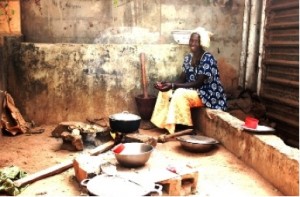
Woman in ‘outside’ kitchen, Fajara, The Gambia © Sylvia Chant
Gender Divisions in ‘Formal’ Employment
In formal economic sectors such as manufacturing, women tend only to be recruited in labour intensive assembly, commonly in ‘offshore’ multinational branch plants where preference for women workers is predicated on women’s assumed docility, reliability, and capacity to work more efficiently than men for lower rates of pay (Elson and Pearson, 1981; also UN Women, 2011:35).
Although new sectors such as ICT nominally offer scope for a more level playing field, there is little evidence that women are making as much headway as their male counterparts. Although some women, especially those who are educated and able to speak English, have been able to secure niches in comparatively well-remunerated occupations in the digital economy, such as in call centre work, the bulk are concentrated in low-end occupations such as data entry (UNRISD, 2010).
For the many women who are excluded from the ‘formal’ economy, the only option is ‘informal’ employment which has conventionally encompassed own-account entrepreneurship, sub-contracted labour, and work in small-scale ‘family’ businesses. Informal workers generally operate beyond the remit of labour and social security legislation and suffer precarious working conditions, a situation which has worsened since the debt crisis of the 1980s during which the ‘feminisation of labour’ has run parallel to an ‘informalisation of labour’ across the Global South.
The Gendering of the Informal Economy
Although men also work informally, women tend to fare worse on account of their restricted use of space, their lower levels of skills and work experience, limited access to start-up capital, and their under- or un-paid roles in ‘family enterprises’ (Chant and Pedwell, 2008; Chen et al, 2004; see also Figure 1). As a result of additional constraints on women’s spatial mobility arising from moral and social norms, and reproductive ties, their informal economic activities are commonly based at home.
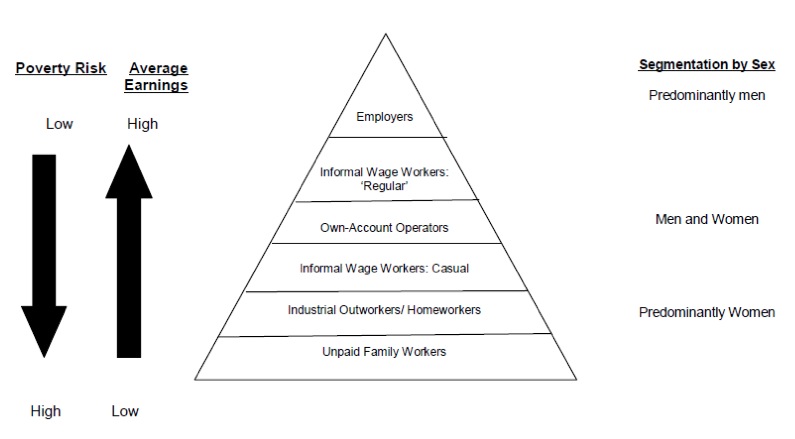
FIGURE 1: Segmentation by sex within the informal economy. Source: Chen (2010, Figure 71.1, 468)
Domestic-based income-generating options are particularly constrained in nature and earning potential for female slumdwellers whose frequently peripheral locations, compounded by inaccessible or unaffordable transport, hamper access to wider and more remunerative markets. In turn, the profitability of home-based enterprises is held in check by inadequate space, services and infrastructure.

Informal home-based eatery (‘carinderia’), Boracay, Philippines © Sylvia Chant
Gender Gaps in Private and Public Assets
Gender differences in access to housing (a ‘private’ asset), along with gender-differentiated impacts of deficient services and infrastructure (public assets), pose an additional range of ‘spatial poverty traps’ for poor and/or slumdwelling urban women (Chant and Datu, 2011).
Land and Housing
Housing is critical to women not only because their domestic roles require them to spend considerable time in the home, but also because it serves as a key resource in their social, psychological and economic well-being and security (Miraftab, 2001).
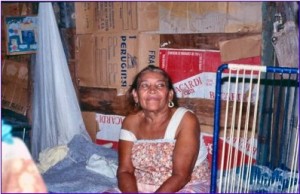
Female household head in self-built slum dwelling, Cañas, Costa Rica © Sylvia Chant
Yet despite numerous national and international policy and legislative initiatives to promote women’s human’s rights to shelter, gender continues to be a major axis of shelter discrimination (COHRE, 2008). While women’s prospects of securing property are generally better in towns and cities than in the countryside — because of greater social and economic opportunities, and because more land and property is acquired through the market rather than inheritance (UNFPA, 2007:19), a UN-HABITAT survey of 16 low-income urban communities in Ghana, Senegal, Tanzania, Uganda, Zambia, Sri Lanka, Colombia and Costa Rica, revealed that only one-third of owner-occupiers were female (Miraftab, 2001).
Since women’s access to land in most parts of the world is usually through husbands or fathers, divorced or deserted women commonly face eviction and/or homelessness in the event of conjugal dissolution. The same applies to widows who may be subject to ‘property grabbing’ by their husband’s kin, as noted in India (Nakray,2010), as well as in many parts of sub-Saharan Africa (Rakodi, 2010; Sweetman, 2008). Even where still-married women may be de jure owners of land or property, this may mean little in respect of their de facto rights over sale, transfer or utilisation (Chant, 2007; Varley, 2007).
Common explanations for gender disparities in shelter and the tendency for land and housing to be registered in the name of (male) ‘household heads’ include women’s limited access to stable employment and earnings, finance and credit (COHRE, 2004). Women may also be dissuaded from claiming title for fear of property taxes (Khosla, 2009: 39), as well as socio-cultural pressures to defer to men’s prerogatives in respect of ownership and management of household assets (Hughes and Wickeri, 2011:847). This is all the more unjust given women’s frequently substantial contributions of time, money and labour to the urban housing stock in slums, where ‘self-help’ is the prevalent mode of provision (Chant, 2013).
As for un-partnered women, qualms about security may prompt them to opt for rental dwellings annexed to landlord-occupied housing. Importantly, however, prejudice against women may disadvantage their prospects as tenants as well as owners of property. Lone women or female heads of household may lack sufficiently regular or well-paid employment to secure rental contracts, particularly where these involve substantial down payments. Additional factors, noted by Penny Vera-Sanso (2006) for southern Indian cities is that rental accommodation may be hard to obtain in the face of aspersions about the sexual propriety of women without male ‘guardians’. This may be compounded by stigma against HIV/AIDS-affected women (Hughes and Wickeri, 2011:859-60), or lesbians (Benavides Llerena et al, 2007).
Urban Services
Safe drinking water and sanitation were both established as human rights by the UN Human Rights Council in 2010, adding impetus to Millennium Development Goal 7 Target 10, which is to ‘reduce by half the proportion of the population without sustainable access to safe drinking water and basic sanitation by 2015’. Yet although access to water is progressing in line with this target, this does not extend to water for bathing, washing and cleaning (Joshi et al, 2011:102). Advances in sanitation are even less encouraging, with urban slums bearing a substantial brunt of deficits in both utilities. In India, not even one-quarter of slum households in Chennai, Delhi, Mumbai and Kolkata avail of improved toilet facilities (Gupta et al, 2009:20). Indeed in Delhi, Meerut, Indore and Nagpur, between one-third and one-half of poor households practice open defecation.

Semi-covered pit latrine, Fajara, The Gambia © Sylvia Chant
Lack of access to decent or affordable services pushes women into heavy loads of compensating labour. Where dwellings lack domestic mains-supplied water, for instance, women have to collect it from public standpipes, wells, boreholes, rivers, or storage drums served by private tankers, a task which may be both arduous and time-consuming, especially where women have to compete with one another at communal sources (Thompson et al, 2000). The costs of informally-supplied water may also be prohibitive, at up to 8-10 times higher from private than public providers (Chant, 2007: 62)

Boiling water on indoor stove, Puerto Vallarta, Mexico © Sylvia Chant
Where there is no electricity supply, time has to be spent collecting or buying fuel and making fires to cook and heat water, and to shop on a daily basis. Where there is no rubbish collection, women have to dispose of solid waste (Khosla, 2009). And in a number of South African cities, where waste management has been privatised, women now have to spend more time keeping streets clean in their communities (Samson, 2003).
Lack of services not only impacts women’s and girls’ workloads, but their dignity and self-respect. Having to use communal toilets and washblocks when experiencing menstruation or pregnancy can be extremely stressful, especially when for reasons of propriety women have to restrict the times they use or accompany their children to shared facilities, and may be further constrained by fear of violence en route or at destination (Amnesty International, 2010; McIlwaine, 2013).
Violence and Gender in Urban Areas
Urban women across the world have been identified by the World Health Organisation as being at particular risk of gender-based violence (GBV), which, in turn, was a major factor in UN-HABITAT’s and UNIFEM’s joint establishment in 2009 of the Global Programme on Safe Cities Free from Violence Against (UN-HABITAT, 2010:13). Together with other forms of urban violence, domestic violence makes women twice as likely as men to suffer acts of aggression (UN-HABITAT, 2006). Indeed, the rate of physical and/or sexual violence against ever-married women aged 15-49 years in Indian cities ranges from 15% in Delhi to as much as 41% in Chennai, and with levels commonly being twice as high in slums than in non-slum areas (Gupta et al, 2009:62).
Women are clearly not the only victims of violence in urban areas. Men are also at risk, and may face premature mortality, especially in slums where becoming part of a youth gang – often associated with drugs and turf wars – is the only viable means of livelihood (see Jones and Rodgers, eds, 2009; McIlwaine and Moser, 2004). However, women also suffer from ‘street violence’, as evidenced in alarmingly high rates of abduction, rape and/or murder in cities such as Ciudad Juárez on Mexico’s northern border with the USA (Jarvis et al, 2009:112). Although the aetiology of urban street violence is complex, and varies from place to place, the risks in many cities are aggravated by lack of simple infrastructure such as adequate street lighting. Yet while ‘public space’ is often uppermost in discourses of ‘safe cities’ for women, it is also recognised that there are ‘connections and continuums between the public and private, and how they are socially constructed and habitually entwined’ (Tankel, 2011:353). Thus, women are often as much at risk of violence in their own neighbourhoods than in cities at large, especially where they have to venture out of their homes to collect water, or use communal sanitation facilities (Moser and McIlwaine, 2004).
While young women might be especially prone to sexual abuse, including gang rape, frail and elderly women may also be vulnerable along with women who ‘transgress’ heteronormative boundaries such as those who live ‘independently’. Where dwellings are precariously built and there are no security patrols, women may also be vulnerable to break-ins, theft and rape in their own homes (McIlwaine, 2013). The relative anonymity of some female urban dwellers, especially recent migrants, may make them more vulnerable to attack from strangers, or in cases of intimate partner abuse, less able to seek protection from kin or neighbours, the latter often exacerbated where women lack individual property rights (COHRE, 2008).
Urban Health and Gender
Now recognised as a major health issue affecting women (see WHO, 2009), GBV compounds a host of problems related to physical and mental well-being in cities and slums.
Even if urban health conditions in general compare favourably with those in rural areas, conditions in slums are often so bad that the notion of an ‘urban penalty’ in health has been widely discussed (e.g. Harpham, 2009; Montgomery et al, 2004; Satterthwaite, 2011). Evidence from eight large Indian cities, for example, shows that slumdwellers suffer a disproportionate risk of communicable diseases such as tuberculosis, as well as health conditions attached to poor diet and inadequate healthcare, such as anaemia, with women and young children being particularly implicated (Gupta et al, 2009: 43 et seq).
For women in slums, risks to physical and mental well-being are aggravated by a range of ‘stressors’ attached to their routine household labour (see Chant, 2007; Ekblad, 1993; WHO, 2009). For example, the use in cooking of solid fuels such as wood, coal and charcoal, are far more harmful to the environment (through deforestation) and to individuals (through lung- and atmosphere-polluting hydrocarbons and carcinogens) than ‘cleaner’, more expensive alternatives such as kerosene, liquid petroleum, gas and electricity. This is especially the case in cramped, poorly-ventilated spaces, such that ‘indoor air pollution’ has been termed a ‘quiet and neglected killer’ of poor women and children (UN-HABITAT, 2008).
Given the general observation that women and the poor worldwide are particularly prone to depression (Patel, 2001; Spitzer, 2005), evidence from São Paulo, Brazil reveals that common mental diseases (CMDs) are almost twice as high (at 21%) in the poorest socio-economic district of the city than in the wealthiest (12%) (Blue, 1996:95). This resonates with recent research on Cape Town, South Africa, which reveals a higher prevalence of CMDs in peri-urban slums (35%) compared with rural areas (27%), and that being female, unemployed and/or engaging in substance abuse are the most common correlates (Harpham, 2009:112).
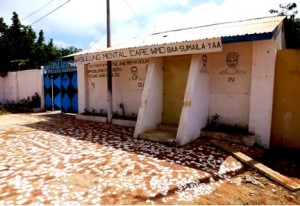
Private mental health clinic, Bakau New Town, The Gambia © Sylvia Chant
Gender Divisions in Space, Mobility and Connectivity
Women’s access to different spaces in the city – especially public space – is generally more limited than that of men, not only due to the domestic-based time and resource constraints associated with reproductive labour, but because of strong symbolic dimensions surrounding the ‘forbidden’ and ‘permitted’ use of spaces governed by patriarchal power relations and norms of female propriety, which may require certain modes of dress and/or behaviour to render women ‘invisible’ or unapproachable (see Fenster, 1999,2005; Jarvis et al, 2009). Restricted female mobility can seriously jeopardise women’s prospects of completing school, entering the labour force, and social networking.
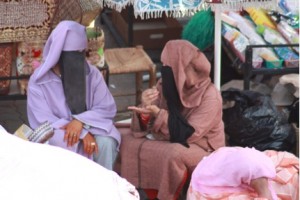
Women traders in spice market, Marrakech, Morocco © Sylvia Chant
On top of this, women’s mobility is constrained by male-biased transport planning which prioritises travel from peri-urban areas to city centres during ‘peak hours’, and ignores women’s dominance in non-peak ‘trip chaining’ (multi-purpose, multi-stop excursions which relate to domestic labour, carework, and informal, part-time employment in non-centralised zones) (Kunieda and Gauthier, 2007). Low-income women also face challenges with respect to transportation costs and personal safety, with elderly and differently-abled women often suffering most (Jarvis et al, 2009).
Gender Disparities in Political Power
Gender differences in power and rights, which apply at all scales, constitute a final critical consideration in the politics of urban space, which is not to deny signs of a mounting female presence in civic engagement and governance. This owes partly to a long legacy of women engaging in collective struggle for basic services and infrastructure, partly due to democratisation and decentralisation, and partly because new political spaces for women have been opened-up in the wake of ‘rights-based’ and ‘multi-stakeholder’ agendas.
For example, in Brazil, women are the majority of participants in budgetary assemblies in Porto Alegre, which has been a pioneer in inclusive urban governance. In India, the 74th Constitutional Amendment Act, introduced in 1992, requires 30% of seats on local councils ‘panchayati raj’ to be occupied by women. This has helped India, along with South Africa, to enjoy among the highest increases in women’s representation in local government across developing regions which is undoubtedly important in prioritising matters of importance in women’s daily lives (see Beall, 2010. However, qualifying these gains, it is crucial to remember that local government bodies are often under-resourced, that women’s contributions are often unpaid and undertaken in the context of rank-and-file rather than leadership positions, and that in many ways the nature of women’s involvement and representation continues to feminise responsibility and neglect ‘strategic gender interests’ in favour of ‘practical gender needs’ (Molyneux, 2001).
Going forward, therefore, the challenge will be to ensure that women’s considerable and multifaceted contributions to building better cities will be matched by greater holding of office in political and policy arenas. More generally, only by approaching gendered urban disparities from a multidimensional, multi-scalar, and multi-spatial vantage point, and recognising gendered inputs, as well as outcomes, across an array of issues (such as housing, service provision, productivity, politics), and sites (home/neighbourhood/community, city, nation), will cities become fairer spaces for all.
—
Professor Sylvia Chant is Professor of Development Geography at the London School of Economics and Political Science, UK, where she is Director of the MSc in Urbanisation and Development. Sylvia has conducted research in Mexico, Costa Rica, Philippines and The Gambia, and has specialist interests in gender and poverty, female employment and urban labour markets, rural-migration, housing, and female-headed households.
Professor Cathy McIlwaine is Professor of Geography at Queen Mary, University of London, UK. Her research has focused on gender, civil society and urban violence in Latin America (Costa Rica, El Salvador, Colombia and Guatemala), South East Asia (the Philippines) and southern Africa (Botswana). More recent work has examined transnational migration among Latin Americans in Europe as well as the nature of migrant labour within London’s low-pay economy.
Related publications include:
Chant, Sylvia (2013) ‘Cities Through a “Gender Lens”: A Golden “Urban Age” for Women in the Global South?’, Environment and Urbanization, 25:1, 9-29. (http://eau.sagepub.com/content/25/1/9).
Chant, Sylvia and McIlwaine (2013) ‘Gendered Urban Prosperity and Women’s Empowerment in 21st Century Cities’, La Camera Blu, 7, 87-115. (http://www.tema.unina.it/index.php/camerablu/article/view/1367/1472)
McIlwaine, Cathy (2013) ‘Urbanisation and Gender-based Violence: Exploring the Paradoxes in the Global South’, Environment and Urbanization, 25:1, 65-79. (http://eau.sagepub.com/content/25/1/65.abstract)
References
Amnesty International (2010) Insecurity and Indignity: Women’s Experiences in the Slums of Nairobi, Kenya (London: Amnesty International). (http://www.amnesty.org/en/library/asset/AFR32/002/2010/en/12a9d334-0b62-40e1-ae4a-e5333752d68c/afr320022010en.pdf)
Beall, Jo (2010) ‘Decentralisation, Women’s Rights and Poverty: Learning From India and South Africa’, in Sylvia Chant (ed.) The International Handbook of Gender and Poverty: Concepts, Research, Policy (Cheltenham: Edward Elgar), 633-7.
Benavides Llerena; Gina; Sánchez Pinto, Silvana; Chávez Nuñez, Gardenia; Solesdipa Toro, Azucena and Sol Paredes, María (2007) Diagnóstico de la Situación del Derecho de las Mujeres a la Vivienda Adecuada desde una Perspectiva de Género en Ecuador (Quito: Comité de América Latina y El Caribe para la Defensa de los Derechos de la Mujer [CLADEM Ecuador]).
Blue, Ilona (1996) ‘Urban Inequalities in Mental Health: The Case of São Paulo’, Environment and Urbanization, 8:2, 91-9.
Bradshaw, Sarah (1995) ‘Female-headed Households in Honduras: Perspectives on Rural-Urban Differences’, Third World Planning Review, 17:2, 117-31.
Centre on Housing Rights and Evictions (COHRE) (2004) Bringing Equality Home: Promoting and Protecting The Inheritance Rights of Women: A Survey of Law and Practice in Sub-Saharan Africa (Geneva: COHRE) (http://www.cohre.org/)
Centre on Housing Rights and Evictions (COHRE) (2008) Women, Slums and Urbanisation: Examining the Causes and Consequences (Geneva: COHRE) (http://www.cohre.org/)
Chant, Sylvia (1997) Women-headed Households: Diversity and Dynamics in the Developing World (Houndmills, Basingstoke: Macmillan)
Chant, Sylvia (2007) Gender, Cities and the Millennium Development Goals in the Global South, LSE Gender Institute, New Series Working Paper, Issue 21, London. (http://www.lse.ac.uk/collections/genderInstitute/pdf/CHANT%20GI.pdf)
Chant, Sylvia (2013) ‘Cities Through a “Gender Lens”: A Golden “Urban Age” for Women in the Global South?’, Environment and Urbanization, 25:1, 9-29.
Chant, Sylvia and Datu, Kerwin (2011) Women in Cities: Prosperity or Poverty? The Importance of Multidimensional and Multi-Spatial Analysis. Paper presented at , ‘The City in Urban Poverty’ workshop, DPU, University College London, 10-11 November 2011.
Chant, Sylvia and McIlwaine, Cathy (2009) Geographies of Development in the 21st Century: An Introduction to the Global South (Cheltenham: Edward Elgar).
Chant, Sylvia and Pedwell, Carolyn (2008) Women, Gender and the Informal Economy: An Assessment of ILO Research, and Suggested Ways Forward (Geneva: International Labour Organisation) (http://www.ilo.org/wcmsp5/groups/public/—dgreports/—dcomm/documents/publication/wcms_091228.pdf )
Chen, Martha A. (2010) ‘Informality, Poverty, and Gender: Evidence From the Global South’, in Sylvia Chant (ed.) The International Handbook of Gender and Poverty: Concepts, Research, Policy (Cheltenham: Edward Elgar), 463-71.
Chen, Martha A., Carr, Marilyn and Vanek, Joann (2004) Mainstreaming Informal Employment and Gender in Poverty Reduction: A Handbook for Policymakers and Other Stakeholders (London: Commonwealth Secretariat).
Dyson, Tim (2010) Population and Development: The Demographic Transition (London: Zed Books).
Ekblad, Solvig (1993) ‘Stressful Environments and their Effects on the Quality of Life in Third World Cities’, Environment and Urbanization, 5:2, 125-34.
Elson, Diane (1999) ‘Labour Markets as Gendered Institutions: Equality, Efficiency and Empowerment Issues’, World Development, 27:3, 611-27.
Elson, Diane and Pearson, Ruth (1981) ‘ “Nimble Fingers Make Cheap Workers”: An Analysis of Women’s Employment in Third World Export Manufacturing’, Feminist Review, 7, 87-107.
Fenster, Tovi (1999) ‘Space for Gender: Cultural Roles of the Forbidden and the Permitted’, Environment and Planning D: Society and Space, 17, 227-46.
Fenster, Tovi (2005) ‘The Right to the Gendered City: Different Formations of Belonging in Everyday Life’, Journal of Gender Studies, 14:3, 217-31.
Gupta, Kamla; Arnold, Fred, and Lhungdim, H. (2009) Health and Living Conditions in Eight Indian Cities, National Family Health Survey (NFHS-3), India, 2005-6, Mumbai/Calverton Maryland: International Institute for Population Sciences/ICF Macro (http://www.measuredhs.com/pubs/pdf/OD58/OD58.pdf).
Harpham, Trudy (2009) ‘Urban Health in Developing Countries: What Do We Know and Where Do We Go?’, Health and Place, 15, 107-16.
Hughes, Katherine and Wickeri, Elisabeth (2011) ‘A Home in the City: Women’s Struggle to Secure Adequate Housing in Urban Tanzania’, Fordham International Law Journal, 34:4, 788-929 (Special Report) (http://law.fordham.edu/publications/index.ihtml?pubid=300)
Jarvis, Helen, with Cloke,Jonathan and Kantor, Paula (2009) Cities and Gender Critical Introductions to Urbanism and the City (London: Routledge).
Jones, Gareth A. and Chant, Sylvia (2009) ‘Globalising Initiatives for Gender Equality and Poverty Reduction: Exploring “Failure” with Reference to Education and Work Among Urban Youth in The Gambia and Ghana’, Geoforum,40: 2, 84-96.
Jones, Gareth A. and Rodgers, Dennis (eds) (2009) Youth Violence in Latin America: Gangs and Juvenile Justice in Perspective (New York: Palgrave Macmillan).
Joshi, Deepa; Fawcett, Ben and Mannan, Fouzia (2011) ‘Health, Hygiene and Appropriate Sanitation: Experiences and Perceptions of the Urban Poor’, Environment and Urbanization, 23:1, 91-112.
Khosla, Rena (2009) Addressing Gender Concerns in India’s Urban Renewal Mission (New Delhi: UNDP) (http://data.undp.org.in/dg/pub/AddressingGenderConcerns.pdf).
Kunieda, Mika and Gauthier, Aimee (2007) Gender and Urban Transport: Smart and Affordable (Eschborn:GTZ) (http://www.itdp.org/documents/7aGenderUT(Sept).pdf).
Massey, Doreen (1994) Space, Place and Gender (Minneapolis: University of Minnesota Press).
McDowell, Linda (1999) Gender, Identity and Place: Understanding Feminist Geographies (Minneapolis: University of Minnesota Press).
McIlwaine, Cathy (2013) Urbanisation and Gender-based Violence: Exploring the Paradoxes in the Global South, Environment and Urbanization, 25:1, 65-79.
McIlwaine, Cathy and Moser, Caroline O. N. (2000) ‘Violence and Social Capital in Urban Poor Communities: Perspectives from Colombia and Guatemala’, Journal of International Development, 13.7, 965-84.
Miraftab, Faranak (2001) ‘Risks and Opportunities in Gender Gaps to Access Shelter: A Platform for Intervention’, International Journal of Politics, Culture and Society, 15:1, 143-60.
Molyneux, Maxine (2001) Women’s Movements in International Perspective:Latin America and Beyond (Houndmills, Basingstoke: Palgrave).
Moser, Caroline and McIlwaine, Cathy (2004) Encounters with Violence in Latin America (London: Routledge).
Nakray, Keerty (2010) ‘Gender, HIV/AIDS and Carework in India: A Need for Gender-sensitive Policy’, in Sylvia Chant (ed.) The International Handbook of Gender and Poverty: Concepts, Research, Policy (Cheltenham: Edward Elgar), 333-8.
Palmer, Ingrid (1992) Gender, Equity and Economic Efficiency in Adjustment Programmes, in Haleh Afshar and Carolyne Dennis (eds) Women and Adjustment Policies in the Third World (Houndmills, Basingstoke: Macmillan), 69-83.
Patel, Vikram (2001) ‘Cultural Factors and International Epidemiology’, British Medical Bulletin, 57, 33-45.
Perrons, Diane and Plomien, Ania (2010) Why Socio-Economic Inequalities Increase? Facts and Policy Responses in Europe, EU Report Commissioned by DG Research, European Commission, Brussels. (http://ec.europa.eu/research/social-sciences/pdf/policy-review-inequalities_en.pdf)
Rakodi, Carole (2010) ‘Gender, Poverty and Access to Land in Cities of the South’, in Sylvia Chant (ed.) The International Handbook of Gender and Poverty: Concepts, Research, Policy (Cheltenham: Edward Elgar), 353-9.
Safa, Helen (1995) The Myth of the Male Breadwinner: Women and Industrialisation in the Caribbean (Boulder, Colorado: Westview).
Samson, Melanie (2003) Dumping on Women: Gender and Privatisation of Waste Management (Woodstock, Cape Town: Municipal Services Project and the South African Municipal Workers’ Union) (http://www.gdrc.info/docs/waste/005.pdf)
Satterthwaite, David (2011) ‘Why is Urban Health So Poor Even in Many Successful Cities?’, Environment and Urbanization, 23:1, 5-11.
Spitzer, Denise L. (2005) ‘Engendering Health Disparities’, Revue Canadienne de Santé Publique, 96:2, 578-95.
Tacoli, Cecilia (2010) ‘Internal Mobility, Migration and Changing Gender Relations: Case Study Perspectives from Mali, Nigeria, Tanzania and Vietnam’, in Sylvia Chant (ed.) The International Handbook of Gender and Poverty: Concepts, Research, Policy (Cheltenham: Edward Elgar), 296-300.
Tacoli, Cecilia and Mabala, Richard (2010) ‘Exploring Mobility and Migration in the Context of Rural-urban Linkages: Why Gender and Generation Matter’, Environment and Urbanization, 22:2, 389-95.
Tankel, Yardena (2011) ‘Reframing “Safe Cities for Women”: Feminist Articulations in Recife’, Developmentm 54:3, 352-7.
Thompson, John; Porras, Ina; Wood, Elisabeth; Tumwine, Hames; Mujwahusi, Mark; Katui-Katua, Munguti, and Johnstone, Nick (2000) ‘Waiting at the Tap: Changes in Urban Water Use in East Africa over Three Decades’, Environment and Urbanization, 12:2, 37-52.
United Nations Department for Economic and Social Affairs (UN-DESA) (2010) The World’s Women 2010: Trends and Statistics (New York: UN).
United Nations Fund for Population Activities (UNFPA) (2007) State of the World’s Population 2007: Unleashing the Potential of Urban Growth (New York: UNFPA). (www.unfpa.org)
UN-HABITAT (2006) The State of The World’s Cities 2006/2007: The Millennium Development Goals and Urban Sustainability – 30 Years of Shaping the Habitat Agenda (London: Earthscan).
UN-HABITAT (2008) The State of The World’s Cities 2008/2009: Harmonious Cities (London: Earthscan).
UN-HABITAT (2010) Gender Equality for Smarter Cities: Challenges and Progress (Nairobi: UN-HABITAT). (http://www.unhabitat.org/pmss/listItemDetails.aspx?publicationID=2887)
UN-HABITAT (2013) State of Women in Cities 2012-13 (Nairobi: UN-HABITAT).
United Nations Research Institute for Social Development (UNRISD) (2010) Combating Poverty and Inequality: Structural Change, Social Policy and Politics (Geneva: UNRISD) (www.unrisd.org).
Varley, Ann (2007) ‘Gender and Property Formalisation: Conventional and Alternative Approaches’, World Development, 35:10, 1739-53.
Vera-Sanso, Penny (2006) ‘Conformity and Contestation: Social Heterogeneity in South Indian Settlements’, in Geert de Neve and Henrike Donner (eds) The Meaning of the Local: Politics of Place in Urban India (London: Routledge/Cavendish), 182-205.
World Health Organisation (2009) Women and Health: Today’s Evidence, Tomorrow’s Agenda (Geneva: WHO) (www.who.org)
Further Reading on E-International Relations
- Gender Troubled? Three Simple Steps to Avoid Silencing Gender in IR
- Opinion – It’s Time to Redefine Gender Mainstreaming
- Feminist Foreign Policy Sharpens Focus on Ending Gender-Based Violence as Key to National Security
- Gender Representation in IR Journals: Experience from Indonesia
- The Diplomat: Gender and Security in Popular Culture
- Gender-Transformative Peacebuilding in Colombia